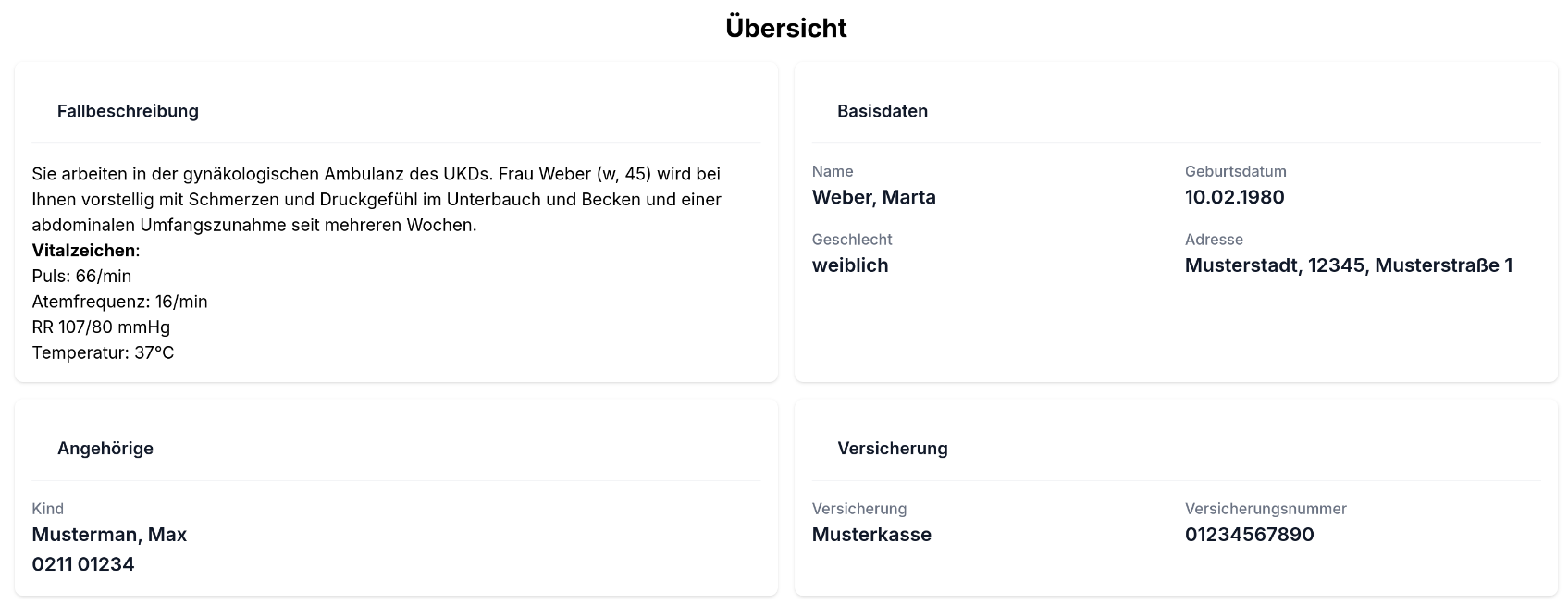5.1 How to Create a New Case
1. Add a case to CaseTemplates
Add a JSON case to CaseTemplates.
- Assign a new
case_id. - Choose the type of your case (dynamic/static). An overview of the differences can be found here.
- Define age, gender, labs, vitals, history, findings and cardinal_symptoms.
2. Add a vignette (optional)
A vignette is a brief description of the case, which will appear on the landing page. you an add the vignette to the JSON case in CaseTemplates as you added the age, history etc.
In the following you can see an axample:
{
"vignette": "Sie arbeiten in der gynäkologischen Ambulanz des UKDs. Frau $name_last ($gender, $age) wird bei Ihnen vorstellig mit Schmerzen und Druckgefühl im Unterbauch und Becken und einer abdominalen Umfangszunahme seit mehreren Wochen.\n\n **Vitalzeichen**: \n\n Puls: $vitals.values.heart_rate/min \n\n Atemfrequenz: $vitals.values.respiratory_rate/min \n\n RR $vitals.values.blood_pressure_systolic/$vitals.values.blood_pressure_diastolic mmHg \n\n Temperatur: $vitals.values.temperature°C"
}
In Clinic Edge it will look like this:

You can also add a vignette_patient, for example:
{
"vignette_patient": "Sie sind Frau $name_last, $age Jahre alt und haben Schmerzen und ein Druckgefühl im Unterbauch. Ihr Bauchumfang hat seit mehreren Wochen zugenommen. "
}
This information will be used by the Chatbot, which acts as the patient in the anamnesis chat.
3. Add vars_path entries
Add or reuse vars_path entries in FindingsTemplate. Ensure to add case-specific findings to vars_path of all applicable examinations in FindingsTemplate.
4. Add normal findings and lab values
Extend normalfindings_collection.json and labvalues.json if necessary.